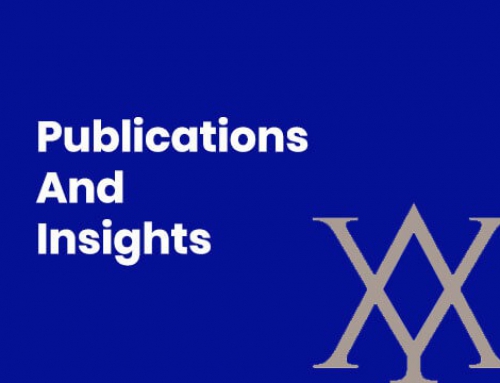It has been close to 2 years now since the Malaysia Trademarks Act 2019 (the new Act) came into force on 27 December 2019, replacing the Trade Marks Act 1976 (the old Act). The new Act introduces substantial changes that seek to bring Malaysia in line with international trademark practices and present-day commercial trends.
In this newsletter, we highlight the 10 key takeaways that can be gleaned from the new Act and the ways in which they have departed from the old Act:
- Accession to the Madrid Protocol – Malaysia is now part of the Madrid Protocol which is an international system for obtaining trademark protection in countries that are signatories by way of a single application and paying a single set of fees. The Madrid Protocol platform benefits both local and foreign brand owners; local brand owners can now file one single international application designating multiple countries while foreign brand owners can now designate Malaysia in their international applications. Previously, local and foreign brand owners were required to submit individual applications via the national IP Office(s).
- Non-traditional marks and collective marks now registrable – Non-traditional trademarks such as shape or packaging of goods, colour, sound, scent, hologram, positioning and sequence of motion are now registrable in Malaysia. Previously, only traditional marks (such as a device, brand, heading, label, ticket, name, signature, word, letter, numeral) were registrable. Collective marks for associations such as clubs, trade unions and societies (previously not available), are now recognized and regulated under the new Act.
- Multi-class applications now available – Trademark owners will now have the option to file their trade mark as a multi-class application that covers several classes in a single application. This allows an easier administration of their trademark portfolio. Accordingly only one form is required for matters such as renewals, amendments, assignments etc. which greatly reduces paperwork compared to single-class applications under the old Act.
- Filing date – Under the new Act, the filing date is the date the Registrar receives the trademark application, barring any deficiencies or irregularities during the filing of the application. Priority dates are no longer deemed as filing dates. For trademarks claiming priority of an earlier date, it will be the filing date (and not the priority date) which will be deemed to be the registration date of the trademark.
- Formality requirements – A Statutory Declaration is no longer required for purposes of completing the trademark filing requirements under the new Act. Where trademarks consisting of words not in Roman characters, English or Malay are concerned, the Registry also no longer requires the applicant to submit a translation and transliteration of the mark certified by a translator. That said, an ordinary translation and transliteration of the mark is now required to be submitted at the time of filing and for the purpose of securing a filing date. Where the translation and transliteration is submitted after the trade mark has been filed, the application will only be accorded a filing date when the translation and transliteration are received by the MyIPO.
- Applicants will have only one strike at the examination stage – Upon examination, only one opportunity is afforded to the applicant to respond to the Registrar’s provisional, either by way of filing written submissions or requesting for a hearing. If after considering the applicant’s response, the Registrar refuses to register the trademark, the applicant will be required to file an appeal with the High Court. This differs from the old Act, where the applicant had two opportunities, first by filing written submissions and then followed by a request for hearing before the Registrar, before finally filing an appeal with the High Court. Under the new Act, there will no longer be appeals to the Registrar.
- Licensing regime replaces the registered user system – The registered user system under the old Act is now abolished and replaced with the licensing regime under the new Act. A licence shall not be effective unless it is in writing and is signed by or on behalf of the grantor. It is also a registrable transaction and once entered in the Trademarks Register, every person shall be deemed to have notice of the licence.
- Recognition of trademark as a form of security interest – The new Act now recognizes a trademark as a personal or moveable property and may be the subject of a security interest in the same way as other personal or moveable property. This opens opportunities for trademark owners who can now use their trademarks as collateral for financial assistance.
- Groundless threats of infringement proceedings – the new Act now offers protection to recipients of threats of infringement actions that are made without good basis, by enabling them a right to commence court actions against persons issuing such threats. A cease and desist letter should therefore be drafted with caution. The mere notification that a trademark is registered, however, is not considered a threat of proceedings.
- Wider scope of Infringement – the new Act now allows registered trademark owners a right to bring an action for infringement of goods and services that are similar to the goods and/or services protected under the registration. Previously under the old Act, an action for infringement may only be brought against goods and/or services that are listed within the scope of the registration.
If you would like to have further information on this write-up, please contact:
Audrey Yap (Ms.)
Regional Managing Partner
D (65) 6358 2865
F (65) 6358 2864
audrey@yusarn.com
Wong Dan Yi (Ms.)
Partner
Unit 33-08, Tower A, Menara UOA Bangsar, No. 5, Jln Bangsar Utama 1, Taman Bangsar,
59000 Kuala Lumpur, Malaysia
T: (603) 22023388
F: (603) 22023366
danyi.aylaw@yusarn.com

